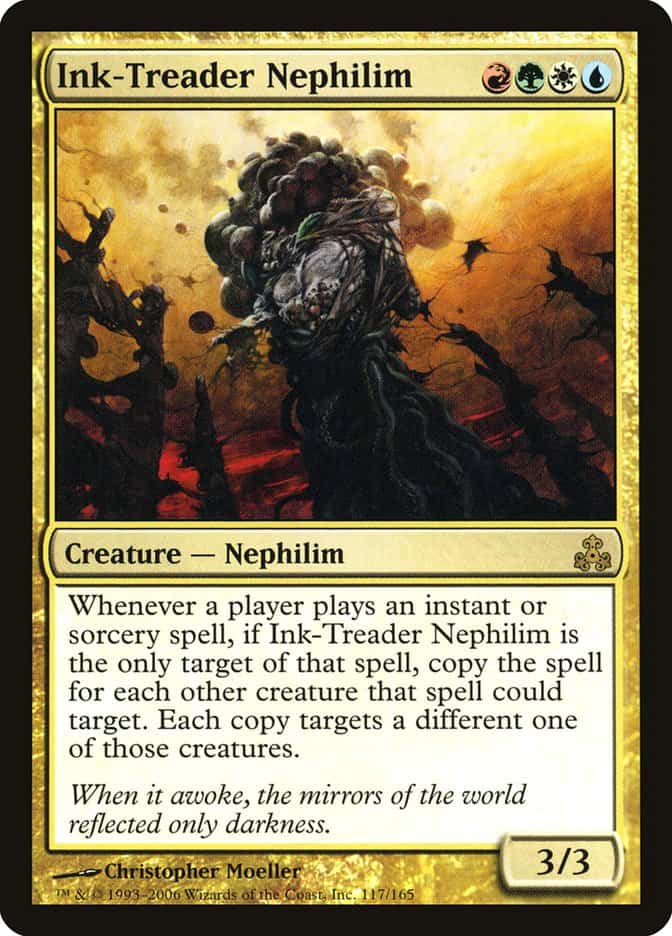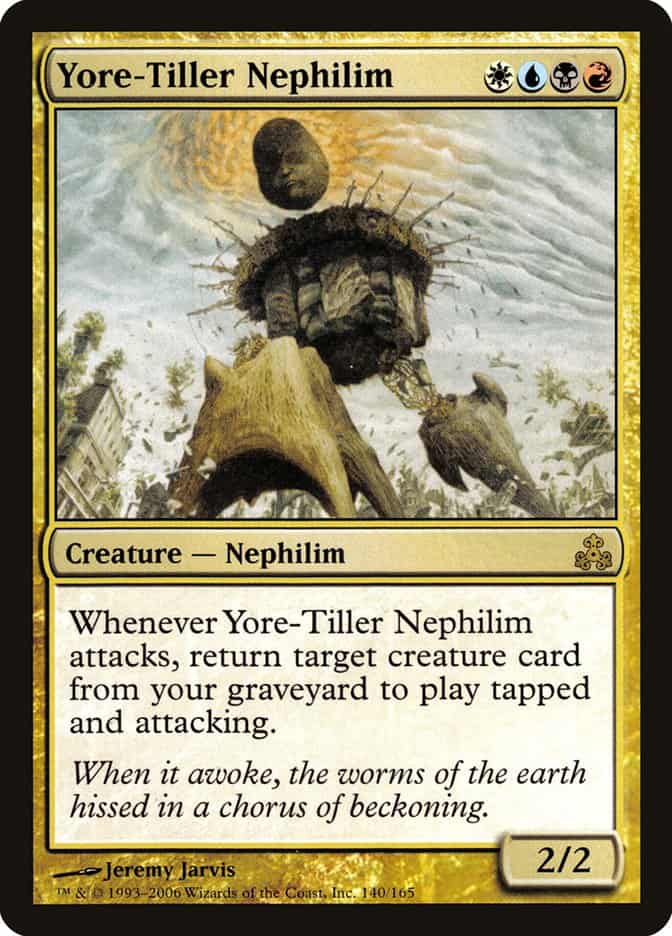If you are a first-time player of Magic the Gathering, or you have not gotten that involved in the game, there are many details about the game that just might not make sense. There is a lot of lore to be aware of, and strategies that take some time to perfect. One of these often confusing details is the colors, their combinations, and what they mean.
Magic the Gathering color combinations help the player customize their deck’s strengths and weaknesses. Each of the five-card colors has different meanings, types of cards involved, and special strengths. When a deck is a two, three, or four-card combination, it has its own personality.
There are a lot of different color combinations, and the first step to understanding those combinations is to understand the colors by themselves. Keep reading to get a better idea of color combinations in Magic the Gathering.
The Importance of Colors in Magic The Gathering
Before we talk about the color meanings of each card and the color combinations, it is essential to know why the colors of the cards are even an important part of the game to begin with.
While some might not consider the different background colors of the cards to be important, when building your deck, it can really help to stick to two or three colors when you are just starting out.
While we have seen playable decks with four colors throughout Magic’s history, not all Magic the Gathering players or games allow certain kinds of color combinations.
Some games only allow two-color decks, some only three, and some only allow one color. It all depends on the kind of game you are playing and the rules of that specific game. When you are creating your deck, it is important to consider the allowed amount of different colors for the games that you will play most often.
The color combination that is featured in your deck will help you get a better idea of the kinds of decks that you can beat. Color combinations are strong against certain other combinations and weak against others. If you know that your combination can beat someone else’s combinations, that would be a good game for you to play in. Having a specific color combination for your deck means that you won’t get overwhelmed with the sheer amount of cards available to you, so you can focus on getting to know your colors and how they benefit your deck.
Can You Mix Colors in Magic The Gathering?
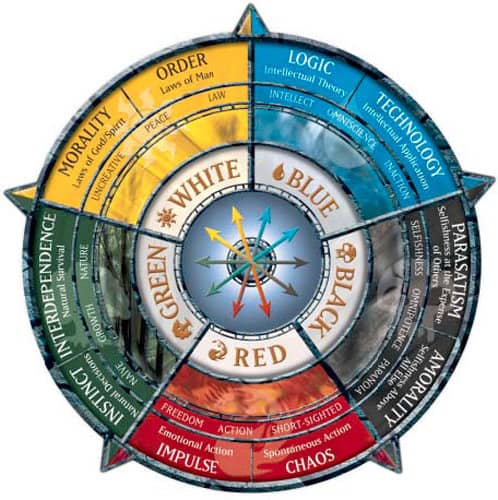
What Do the Colors of MTG Mean?
Now that you know the importance of the card colors in Magic the Gathering, it is important to know the specific colors and what they mean.
While we will not go over the detailed meaning of each of the 25 possible color combinations, we will help you understand the meanings and personalities of each of the five colors. This will give you a solid understanding of how individual colors may interact when combined.
When building your deck, you can pick the colors that have the traits you want for your deck. You can click the video below to get a good introduction to each of the colors.

MTG Color White Meaning
The first color we will talk about is white. White is best known for focusing on comradery, coordination, and order.
White is very much focused on the overall win, rather than the individual characters. This means that the function of a white card is not meant to be able to overpower other cards, but it is meant to be used with other white cards to gain strength. White is strongest when all of the cards are playable, so it often revives fallen allies.
The strengths of white cards are preventing damage, protecting, clearing the board, taxing, life gain, and others. (Source)
These strengths mean that white cards are great as a force together. Instead of using brute force and giant creatures, white cards work together to become a powerful force.
White can be an oppressive opponent or powerful ally when used properly but It can take a bit of time to get used to properly learn how to play to the strengths of white.
Example MTG Mechnics Featured in White

MTG Color Black Meaning
Black is an opponent of white and while it has the same goal of winning, it does it in a much less ethical way.
Black is generally selfish, self-indulgent, powerful, open, and self-determined. Black is very powerful, but without rules to keep it in check, it can destroy itself in the process. Black cards deal with raw power to kill anything in the way, deals with demons, self-destruction, and necromancy. While black cards are extremely powerful, without a proper strategy, they can accidentally do more harm to themselves than intended, causing the player to lose the game.
Blacks mechanics in the game are destruction, parasites, reanimation, weakening, drawing cards, death touch, and life gain. Black is very good at evading other players, weakening other players, turning their own against them, and reviving their own cards. Because of the self-destructive nature of the black cards, they have quite a few opportunities to bring cards back from the dead.
Example MTG Mechnics Featured in Black

MTG Color Blue Meaning
Blue is primarily based on knowledge. This is why they have a lot more opportunities for drawing cards, to “learn new spells”.
Blue is intellectual, innovative, and calculated. When playing with blue cards, you will have a lot of options for moves during your turn. It takes quite a bit of strategizing to come up with the best way to use your available cards or knowledge.
Single cards in the blue deck are not the most powerful, but when combined correctly, they become a real force to reckon with when dealing with this mtg color.
In the game-play, blue’s mechanics are card drawing, counterspells, theft, trickery, bounce, tap/untap, and mimicry. These are all reflective of the personality of blue. Using knowledge and intellect allows for blue to have more opportunities to outwit the opponent instead of crushing them with brute force. Blue is also good at protecting itself because it cannot take too many hits and needs time to gather spells and items from the deck.
Example MTG Mechnics Featured in Blue

MTG Color Red Meaning
Red is best known for being emotional and hard-hitting.
It is considered to be the most human color, and it is focused on using rage, aggression, and anger to deal damage. Red is all about freedom, anarchy, impulsiveness, and spontaneity. Red cards are not meant to be used with as much strategy as blue or white are, so individual cards are powerful. Red cards are not predictable, so there are a lot of them that require coin flips, or random discards and redraws.
Primary game mechanics for red include land destruction, burn, combat superiority, aggression, and randomness. These traits all work together to make red a dangerous competitor that is difficult to pin down. Individual red cards are very powerful and do not often need to work with other cards to do a lot of damage. Red is powerful, and to play well with red cards, you need to be able to adapt and adjust to new situations quickly and do not plan your moves ahead too far. The randomness of red makes it hard to plan ahead when you don’t even know what is really going to happen.
Example MTG Mechnics Featured in Red

MTG Color Green Meaning
Green is the color that represents nature and growth.
It is focused on large monsters, giant wildlife, and cards meant to remove man-made creations from the board. Traits of green are harmony, interdependence, adapting, coexistence, and predatory. All of the power of green comes from nature and it will grow throughout the game. Green is very compatible with white because of a desire for peace without destroying the good. However, green does not hesitate to destroy the enemy and has a lot more powerful individual cards than white does.
Game mechanics that green often uses are powerful creatures, mana fixing, mana acceleration, pump spells, tokens, and evasion. These kinds of moves are meant to grow green while taking out the enemy. Pump spells and tokens help make green stronger as the game goes on, the powerful creatures are the big hitters, and evasion helps green stay present while gaining the power to beat the enemy.
Example MTG Mechnics Featured in Green
2 Color Combination MTG Names: Guilds Color Combos
| Color Name | White | Blue | Black | Red | Green |
|---|---|---|---|---|---|
| Azorius | ✔ | ✔ | |||
| Orzhov | ✔ | ✔ | |||
| Selesnya | ✔ | ✔ | |||
| Boros | ✔ | ✔ | |||
| Gruul | ✔ | ✔ | |||
| Izzet | ✔ | ✔ | |||
| Rakdos | ✔ | ✔ | |||
| Golgari | ✔ | ✔ | |||
| Dimir | ✔ | ✔ | |||
| Simic | ✔ | ✔ |

MTG Emney Color Pairs
Orzhov: White-Black
The power of the black pairs well with the comradery of white to create a deck that is powerful without destroying itself in the process.
With both of these colors featuring life-giving cards, it can become very difficult to wipe out an Orzhov deck as they will be able to bring back their most powerful characters and keep fighting. (Source)
Simic: Blue-Green
One of the strongest colors in the game is blue, and so it makes sense that this color combo of blue and green can be a powerful combination.
This color combination is called Simic, and it makes a lot of very powerful cards available to the player. You get the advantages of being strategic and planning card combinations while also having cards that can deal a lot of damage on their own.
Blue and green cards fit nicely together. One weakness is that they both take a few moves to really build up a powerful attack, and are often vulnerable at the beginning of the game.
Golgari: Black-Green
The Golgari reveal the dark side of nature. “Survival of the fittest” is their motto.
Nothing stands in their path, not even death. Green’s natural fertility is enhanced by Black’s decay to create an instinctive urge to grow and expand.
The desire for power created by Black’s dark hunger and Green’s never-ceasing need for growth, will have you casting large creatures from both your hand and graveyard.
Izzet: Red-Blue
The blue-red combination is quite an interesting pair to work with because they are complete opposites in nearly every way.
Known as Izzet, a blue and red deck combines strategizing over time while making unpredictable, but powerful moves. When you learn how to strategize with this combination, you will find that it is incredibly powerful and it is difficult to beat.
However, sometimes the impulsiveness of red can make it difficult to make a solid strategy with blue. When used properly, it is a force to be reckoned with, but when used poorly, it can easily destroy itself, costing you the game.
Boros: Red-White
Red’s aggression with White’s defensive posture combines to form a well-balanced military unit.
White’s pure spiritual discipline is tempered by Red’s chaotic fiery brilliance to produce a Radiance that their troops adore and which their enemies fear.
Boros creatures have access to some powerful combat abilities and keywords. However, they’re at their best when they work together. Red’s aggressiveness and White’s tactics can quickly create a disciplined board of creatures that wants to hit hard and fast before your opponents even have a chance to know what hit them.

MTG Allied Color Pairs
Azorius: White-Blue
Blue and white typically have a defensive angle to them.
As a result, both their creatures are somewhat more on the defensive side, the creatures focusing on having more toughness than power. Azorius[1] tends to be more controlling, tapping creatures on your opponent’s side of the board and flying over them with an army of evasive creatures.
White and blue are the most reactive magical colors, with white protecting itself and its creatures, while blue tinkers with the rules of magic, countering spells and taking extra turns. The two colors, however, have a similar feel in that they generally wait for the opponent to make a move first.
Selesnya: White-Green
Green-white mixes effortlessly. The green-white color combination is the most similar of all the colors in the game.
Green and white are the two most creature-centric colors. This implies you’ll frequently end up casting some of Magic’s most massive and sturdy creatures when playing Selesnya.[2]
The colors have share keyword mechanics such as lifegain, creature boosts, enchantment removal, vigilance, damage prevention, +1/+1 counter generation, and untapping creatures.
Gruul: Red-Green
Another powerful combination is the green and red deck, which is known as Gruul.
A Gruul deck has a lot of power and is very straightforward to use. Green and red have the similarity of a lot of power, which means that it is a very aggressive combination. This deck is full of powerful monsters and hard-hitting moves that can be built up and used fairly quickly.
Green helps balance red by not letting it get too out of control and then using its power to deal a lot of damage.
Rakdos: Black-Red
Red and black are both aggressive, and they have the best creature removal. Rakdos[3] is capable of dealing direct damage to creatures and players, with draining effects for black and normal direct damage for red.
Together the colors have the power to destroy lands, increase the power of creatures, grant haste, and can often be a menace to block.
Dimir: Blue-Black
Blue and black are widely regarded as the rulers of card advantage. Blue is the king of card drawing, and black isn’t that far behind. Blue has counterspells and bounce spells, whereas Black features discard and murdering creatures.
Dimir[4] is fantastic at slowly taking the upper hand, usually subtly enough that even inexperienced players wouldn’t realize they’ve lost the game until it’s too late.
Blue and black aesthetically complement one another. The two colors have a certain flavor and feel that work well together. Blue is devious and sly. Black is underhanded and ruthless. You won’t be making any friends when you are playing this color combination.
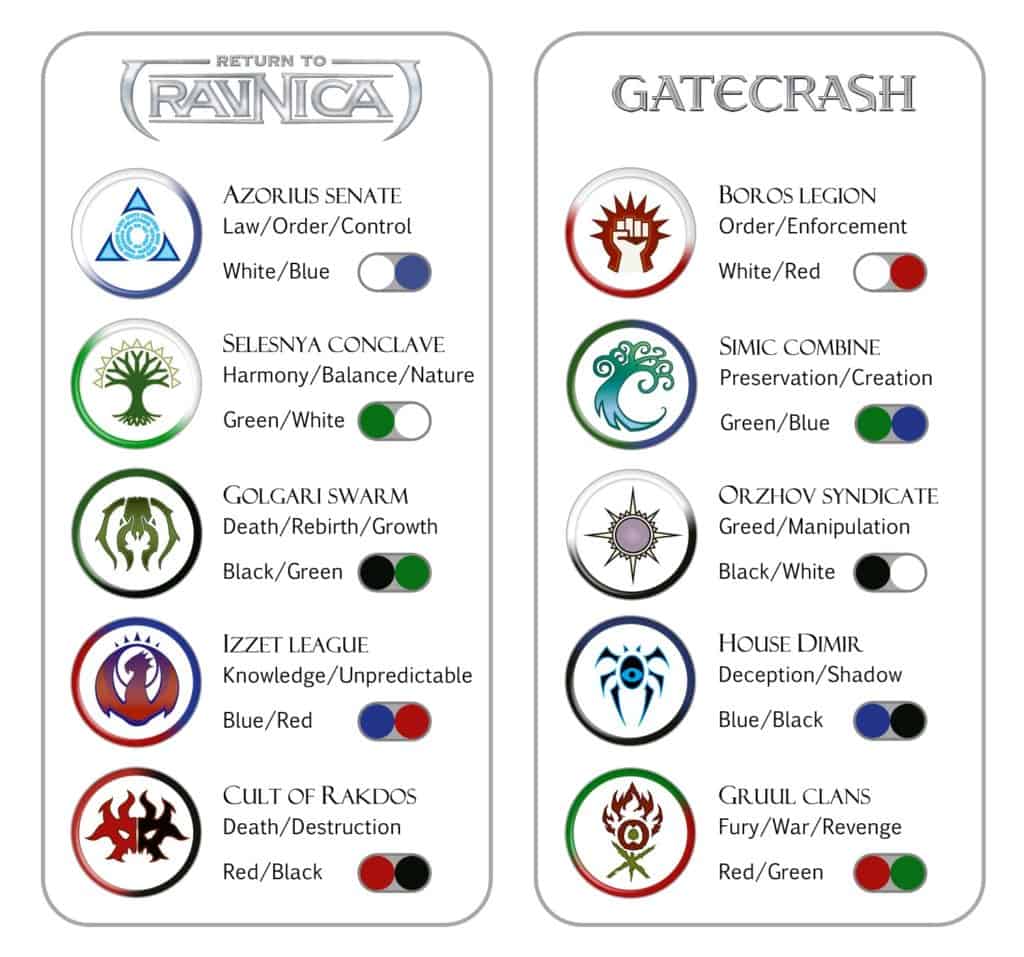
Each of these color combinations has its own strengths and weaknesses and the combination of colors can help get rid of weaknesses and build up new strengths.
3 Color Combination MTG Names: The Shards and Wedges
| Color Name | White | Blue | Black | Red | Green |
|---|---|---|---|---|---|
| Abzan | ✔ | ✔ | ✔ | ||
| Bant | ✔ | ✔ | ✔ | ||
| Esper | ✔ | ✔ | ✔ | ||
| Grixis | ✔ | ✔ | |||
| Jeskai | ✔ | ✔ | ✔ | ||
| Jund | ✔ | ✔ | ✔ | ||
| Mardu | ✔ | ✔ | ✔ | ||
| Naya | ✔ | ✔ | ✔ | ||
| Sultai | ✔ | ✔ | ✔ | ||
| Temur | ✔ | ✔ | ✔ |

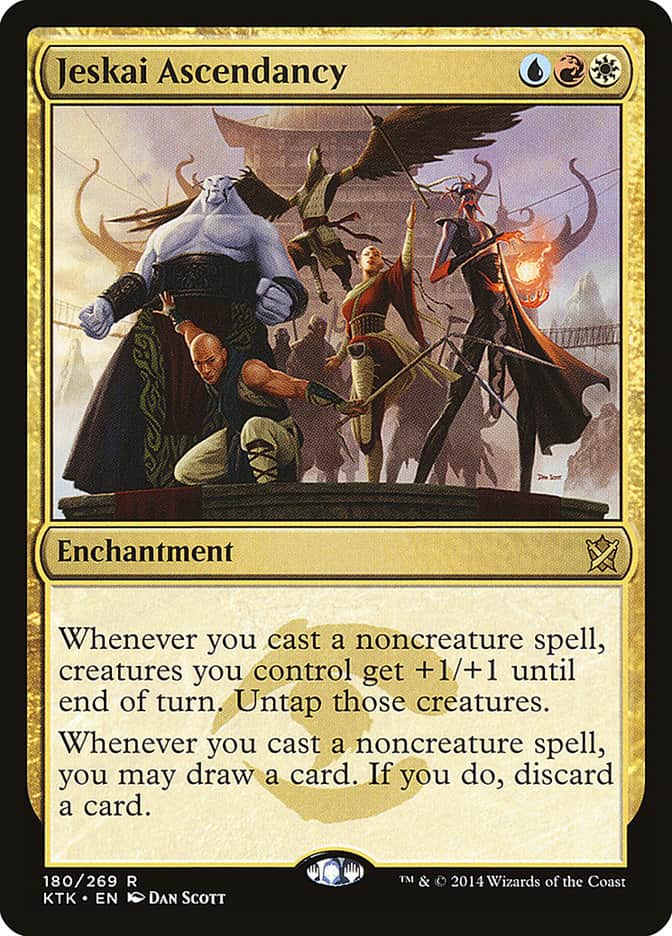
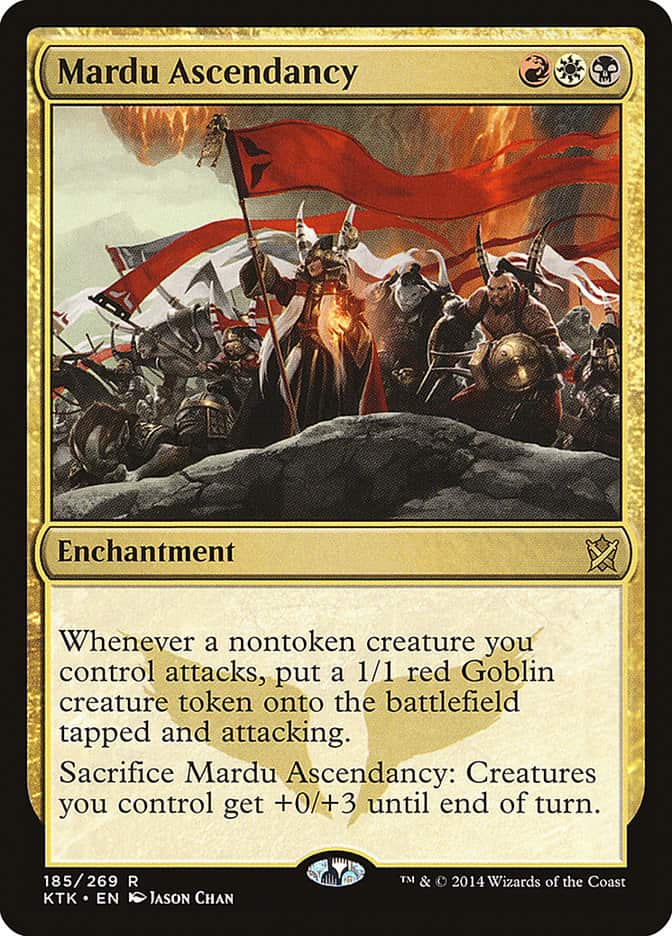
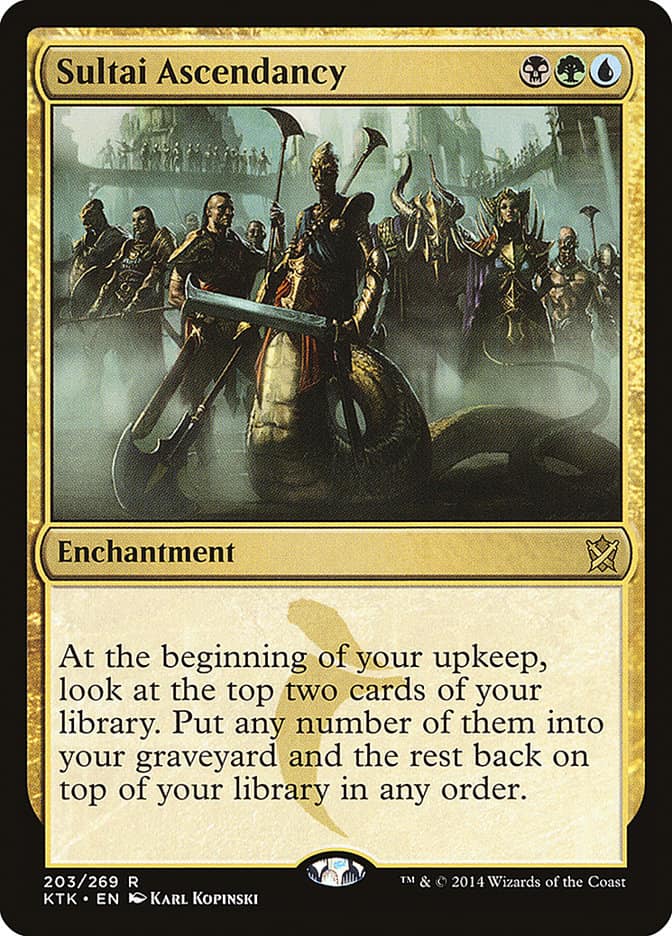
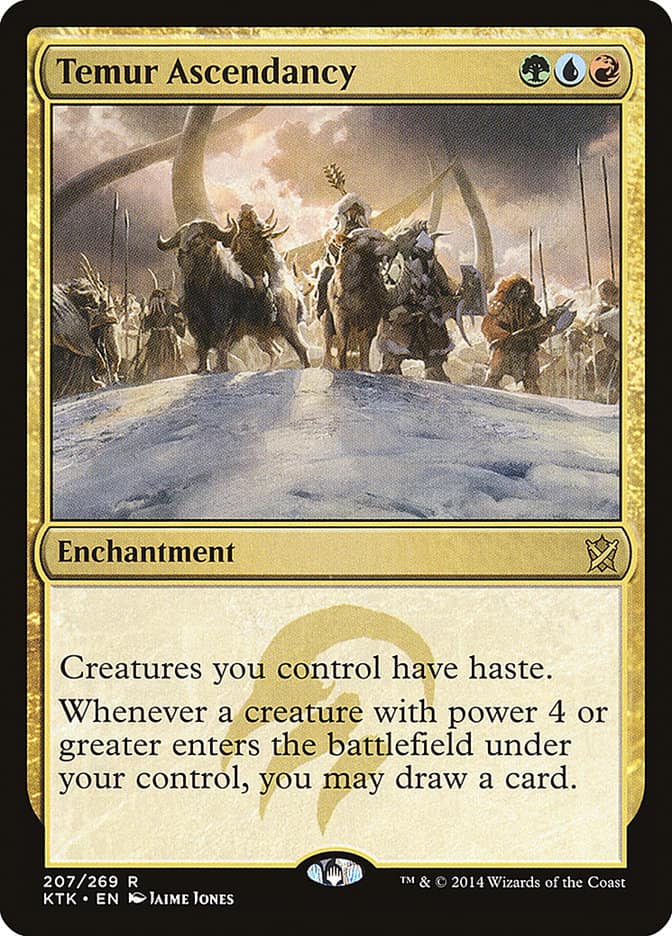
MTG Wedge Color Combinations
- Abzan: White-Black-Green
- Jeskai: White-Blue-Red
- Mardu: White-Black-Red
- Sultai: Blue-Black-Green
- Temur: Blue-Red-Green
MTG Shard Color Combinations
- Bant: White-Blue-Green
- Esper: White-Blue-Black
- Grixis: Blue-Black-Red
- Jund: Black-Red-Green
- Naya: White-Red-Green
4 Color Combination MTG Names: Nephilim Creatures
| Color Name | White | Blue | Black | Red | Green |
|---|---|---|---|---|---|
| Glint | ✔ | ✔ | ✔ | ✔ | |
| Dune | ✔ | ✔ | ✔ | ✔ | |
| Ink | ✔ | ✔ | ✔ | ✔ | |
| Witch | ✔ | ✔ | ✔ | ✔ | |
| Yore | ✔ | ✔ | ✔ | ✔ |
- Glint: Blue-Black-Red-Green
- Dune: White-Black-Red-Green
- Ink: White-Blue-Red-Green
- Witch: White-Blue-Black-Green
- Yore: White-Blue-Black-Red


